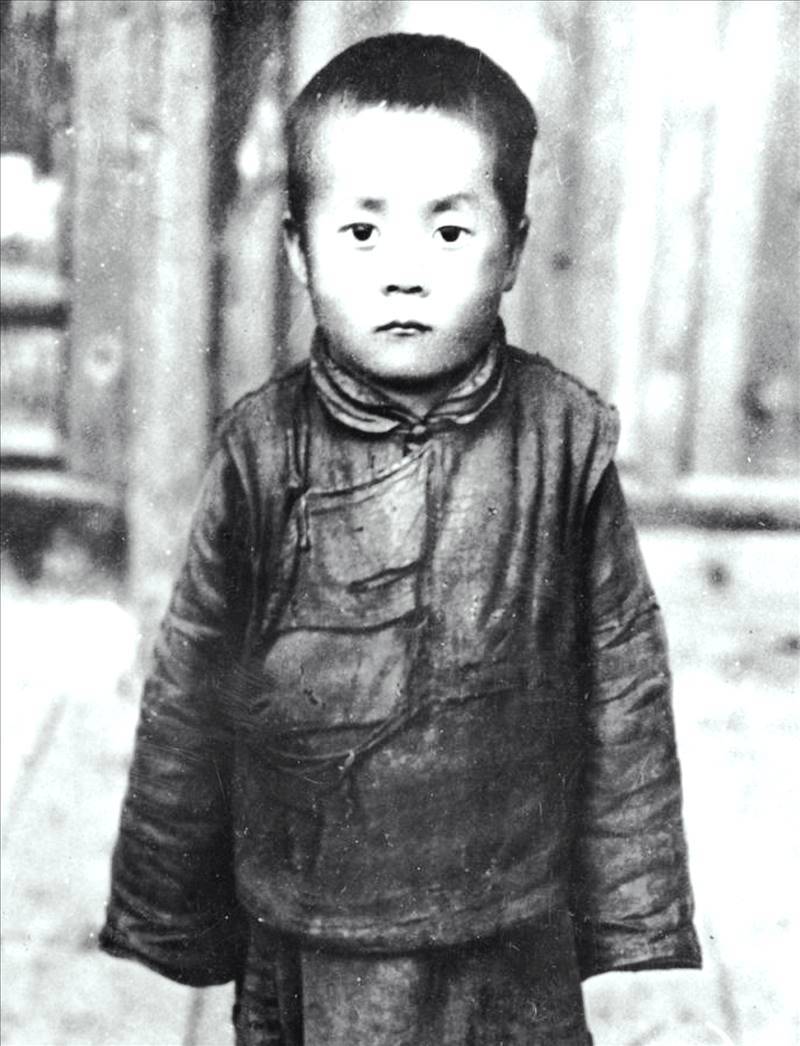
Although he describes himself as a simple Buddhist monk, the Dalai Lama has been called one of the world’s most influential people. Followers believe he is the manifestation of Avalokiteshvara Bodhisattva, the enlightened Buddha of compassion. He has been living in exile since 1959, but he travels the world with a message of tolerance and peace and is arguably the most visible symbol of Tibet’s struggle for autonomy.
This photograph shows the Dalai Lama as a child. He was born Lhamo Dhondrub on July 6, 1935, in the small village of Taktser in north eastern Tibet. He was selected as the tulku of the 13th Dalai Lama in 1937 and formally recognized as the 14th Dalai Lama in a public declaration near the town of Bumchen in 1939. On 26 January 1940, the Regent Reting Rinpoche requested the Central Government to exempt Tenzin Gyatso from the lot-drawing process of the Golden Urn to become the 14th Dalai Lama. The request was approved by the Central Government. His enthronement ceremony as the Dalai Lama was held in Lhasa on 22 February 1940 and he eventually assumed full temporal (political) duties on 17 November 1950, at the age of 15, after the People’s Republic of China’s occupation of Tibet. The Gelug school’s government administered an area roughly corresponding to the Tibet Autonomous Region, just as the nascent PRC wished to assert control over it.
During the 1959 Tibetan uprising, the Dalai Lama fled to India, where he currently lives as a refugee. He has travelled the world and has spoken about the welfare of Tibetans, environment, economics, women’s rights, nonviolence, interfaith dialogue, physics, astronomy, Buddhism and science, cognitive neuroscience, reproductive health and sexuality, along with various topics of Mahayana and Vajrayana Buddhist teachings. A recipient of the Nobel Peace Prize in 1989 and the US Congressional Gold Medal in 2006, Time magazine named him one of the “Children of Mahatma Gandhi” and Gandhi’s spiritual heir to nonviolence.
This photograph shows the Dalai Lama as a child. He was born Lhamo Dhondrub on July 6, 1935, in the small village of Taktser in north eastern Tibet. He was selected as the tulku of the 13th Dalai Lama in 1937 and formally recognized as the 14th Dalai Lama in a public declaration near the town of Bumchen in 1939. On 26 January 1940, the Regent Reting Rinpoche requested the Central Government to exempt Tenzin Gyatso from the lot-drawing process of the Golden Urn to become the 14th Dalai Lama. The request was approved by the Central Government. His enthronement ceremony as the Dalai Lama was held in Lhasa on 22 February 1940 and he eventually assumed full temporal (political) duties on 17 November 1950, at the age of 15, after the People’s Republic of China’s occupation of Tibet. The Gelug school’s government administered an area roughly corresponding to the Tibet Autonomous Region, just as the nascent PRC wished to assert control over it.
During the 1959 Tibetan uprising, the Dalai Lama fled to India, where he currently lives as a refugee. He has travelled the world and has spoken about the welfare of Tibetans, environment, economics, women’s rights, nonviolence, interfaith dialogue, physics, astronomy, Buddhism and science, cognitive neuroscience, reproductive health and sexuality, along with various topics of Mahayana and Vajrayana Buddhist teachings. A recipient of the Nobel Peace Prize in 1989 and the US Congressional Gold Medal in 2006, Time magazine named him one of the “Children of Mahatma Gandhi” and Gandhi’s spiritual heir to nonviolence.

